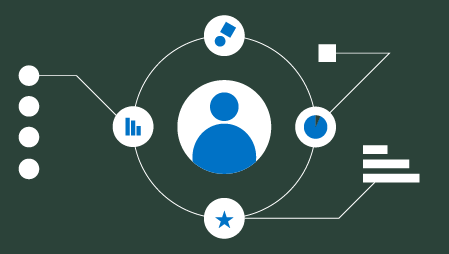Ready to learn Data Science? Browse courses like Data Science Training and Certification developed by industry thought leaders and Experfy in Harvard Innovation Lab.

This article examines the validity of the most widely held misconceptions about robotic process automation (RPA).
Myth 1 – RPA will replace humans
Whenever a significant technology such as RPA software emerges, there’s always a concern that the human workforce will be replaced. In reality, by automating high volume tasks, RPA only reduces the need for repetitive human effort. Rather than removing humans from the workplace, RPA will liberate them from conducting rote and repetitive tasks and allow them to focus on more value-added work.
Humans will also gain more time to innovate and be creative – so they can seek out areas for continuous improvement and be re-deployed to higher-level, managerial or supervisory roles. There are already new roles being created in the RPA environment – where humans orchestrate, monitor and train the robots, and in time, more opportunities will emerge. In fact, as software robots increasingly work on repetitive tasks tirelessly and continuously, they are gradually being embraced by human staff as valuable team members.
Myth 2 – RPA is only about cost reduction
While cost reduction can definitely be achieved by RPA, it’s not the main reason why businesses choose it. The key drivers for purchasing RPA include; accelerating the time it takes to complete processes, liberating staff to be deployed on higher value projects – as well as generating greater predictability and higher process quality.
Another major benefit that businesses experience is better consistency – because robots always process activities in exactly the same manner. Also, as robots capture and log all activities, the degree of compliance and available reporting data for analysis, increases significantly. Furthermore, robots can easily be scaled up and down, which is very important for processes where flexibility and scalability are required. And finally, robots work faster than humans – which improves throughput times.
Myth 3 – RPA is expensive
RPA does have initial implementation costs to get it up-and-running and then to keep it operational. These include the build phase – including the provisioning of IT infrastructure such as databases, physical / virtual machines etc. and IT resource time to get RPA up-and-running. Also, additional consultancy costs from partner companies should be added. Running costs are largely time related and centre around the ongoing delivery and maintenance of processes, maintenance of underlying infrastructure and support etc.
However, RPA costs are typically not significant compared to those that accompany business process management software or enterprise resource planning implementation and traditional options such as business process outsourcing or offshore manual processing. RPA also provides rapid internal cost reduction and significant increases in ROI, making it a very appealing option for many companies.
Myth 4 – RPA software robots are always accurate.
If software robots are correctly set up they will be completely accurate. However, they are capable of making mistakes – especially as they possess no ‘common sense. This means if there’s a mistake in the instructions provided to robots, they will replicate the error that’s present in a workflow – hundreds or thousands of times – until it is spotted by a human.
These errors may necessitate that work is redone, either manually – or by re-automating tasks after the mistakes have been fixed. In order to avoid these problems, it’s important to ensure that processes are error-free before automation and the software robots are monitored by humans – at least in the initial stages of automation.
Myth 5 – RPA is not applicable for some sectors
There’s a common misconception that RPA is only productive in certain industries, but back office tasks exist in every industry. RPA can be applied to almost any repetitive, rules-based, high-volume, business activity. RPA can be used, for example, to manage claims processing in insurance, order processing in retail, and fraud detection in banking.
Myth 6 – All office work can be automated by RPA
Although RPA is perfect for work that is rule-based and has digitised inputs, there are limitations to the types of tasks that it can be applied to – specifically ones that require human judgement. RPA becomes more challenging where processes are non-standardised and require frequent human intervention to complete – such as interacting with customers or working with process variability.
Even processes that pass the RPA feasibility criteria, these still may not be the best ‘candidates’ for automation – at least not initially. For example, automating an inefficient process, can potentially only speed up the inefficiency. More benefit could be gained from either making the process more efficient, prior to automating – or by redesigning the process during the design phase of delivery.
Until artificial intelligence and machine learning catch up to the cognitive thinking skills of humans – they will still be at the heart of key decision-making.There are promising developments in the area of self-learning systems that can deal with case-based / unstructured activities but these are not typically part of RPA solutions.
Myth 7- RPA can be implemented without involvement of the IT department
Although RPA is swift to implement, and minimises the need for costly systems integration, these benefits are not always fully appreciated by the IT department. The net result is that RPA adoption isn’t normally driven by IT – but by business units instead. However, IT must be involved and fully supportive at the outset of any RPA initiative. The IT department delivers the infrastructure required and applies roles and permissions to a robotic user account – therefore no robot can operate without a PC, a user account, or access to an application.
To get the IT department engaged, there’s a growing list of scenarios that should be communicated that benefit its own internal operations. These can range from initial projects in service management and transaction processing – to resource-intensive, administrative and transactional work. As well as the obvious cost savings and efficiency improvements, in the short term, RPA has the potential to challenge the way that processes are fulfilled in IT. RPA will also provide future benefits too – allowing IT to digitise things that currently aren’t possible and provide valuable insights into forthcoming IT challenges.
Image source: Shutterstock/Sarah Holmlund



